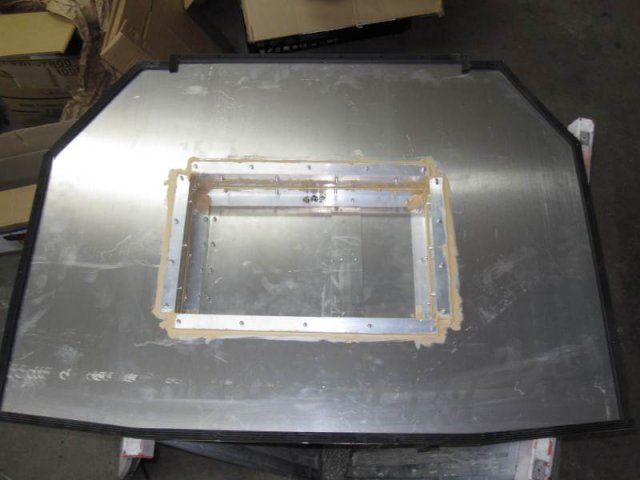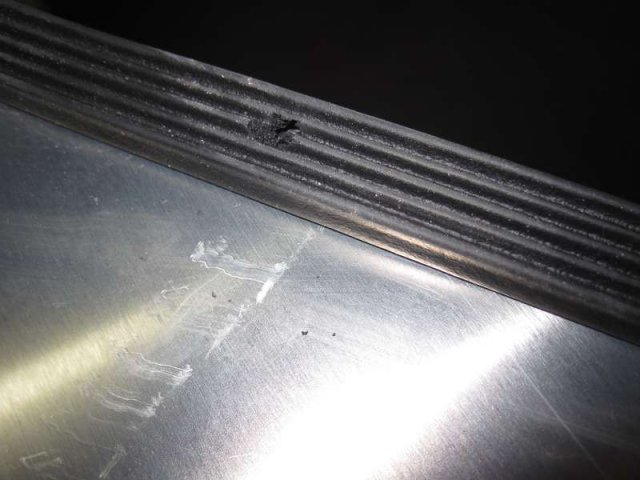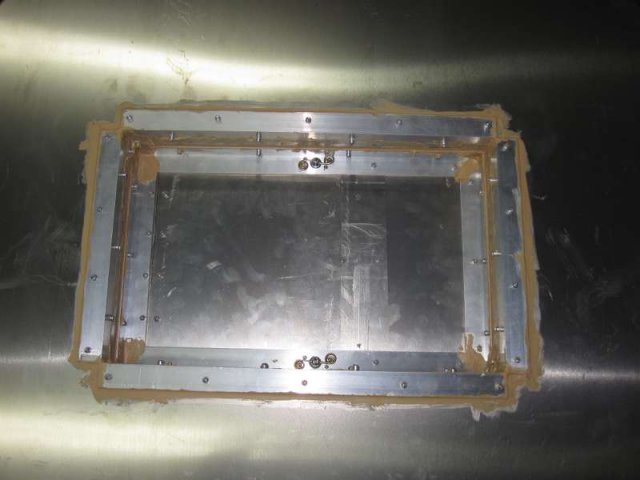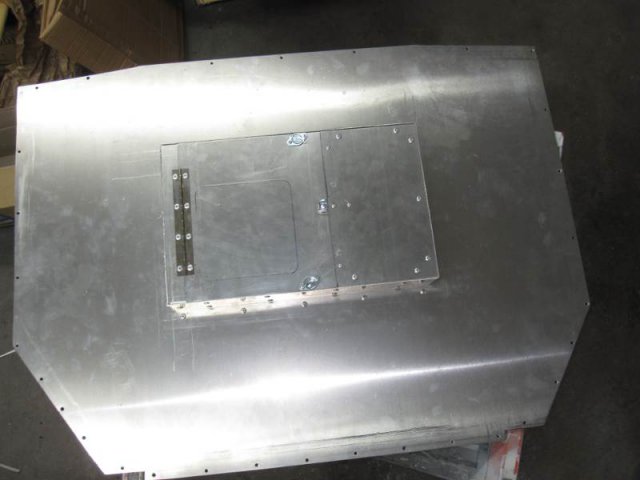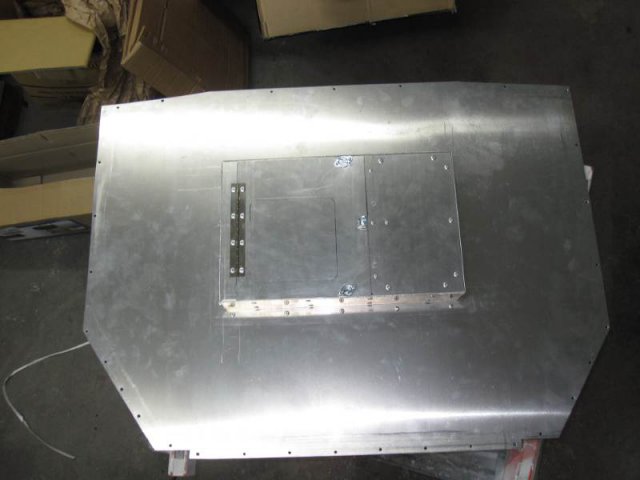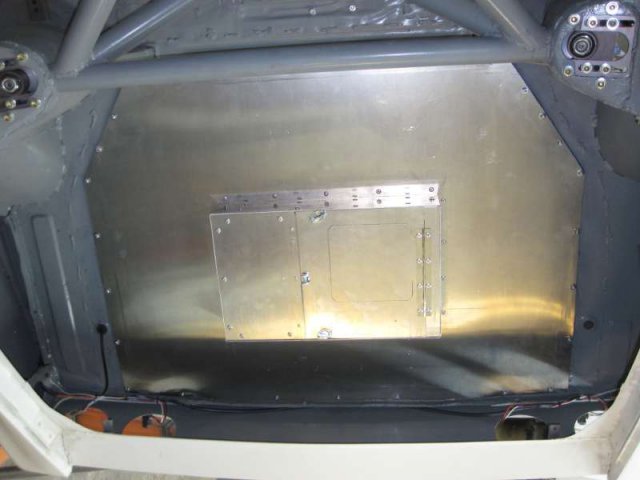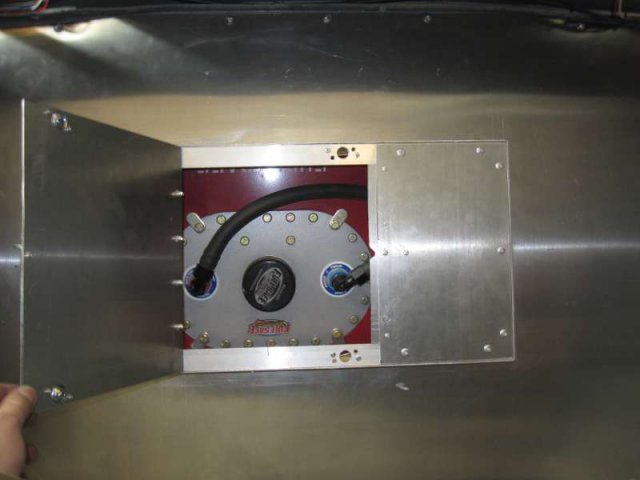-
Posts
13742 -
Joined
-
Last visited
-
Days Won
67
Content Type
Profiles
Forums
Blogs
Events
Gallery
Downloads
Store
Everything posted by JMortensen
-
Has anyone tried this type of air deflector?
JMortensen replied to djwarner's topic in Windtunnel Test Results and Analysis
Agree with Richard. FWIW, when you see these deflectors on Blazers and wagons, I think the idea there is to keep the rear window from getting dirty, rather than to lessen the separation of flow on the hatch. As far as solutions to the flow separation, you could look at WRX vs EVO. The WRX had a roof mounted deflector along the top that did the same basic thing. If I recall, the EVO's VGs were the better solution, but those were sedans with a pretty steep rear window angle. Since the angle of the hatch isn't that severe, I don't think you would want these things on the side directing side air across the window. Seems like the side deflectors would be high drag. -
Chassis Setup (corner weights)
JMortensen replied to 74_5.0L_Z's topic in Brakes, Wheels, Suspension and Chassis
I've got 1.25" on my LSx, and that's about as much as I can get out of it.Might be able to push to 1.5, but it would be TIGHT. The T56 is the issue, might be able to go further with a smaller trans. I don't have to worry about exhaust either, since I'm going side pipes out the front fenders. The alignment of the pedals and seat doesn't really matter that much. I wanted to try my race seat in my Miata so I made a really crude mount for the stock rails and drove it. Didn't have any problems with it and honestly never noticed it when driving, but in looking at it later the seat was something like 3" left of where the stock seat was. -
The picture above is a 2 pinion. The reason the carrier has to bolt together on the OP's diff is that you can't have a big window in a 4 pinion carrier. There just wouldn't be any way to get the pinions in there, because the cross pin shaft is an X, and there wouldn't be anyplace for the pinions to ride on the case, so the carrier bolts together instead. Here is a thread where they disassemble the 4 pin open: http://z31performance.com/forum/z31-performance-forums/driveline/12411-four-pinion-open-diff
-
Not that one, apparently. 87-89 had them. Maybe that was an 86 or had a diff swap or something.
-
4 pinion open diff.
-
FINALLY an LS powered Z that isn't 2500+ lbs! Was starting to wonder if everyone's numbers were way out of whack or something...
-
The big issue with the stock rail is that it bolts to the head, gets really freaking hot and helps the fuel to boil. Same thing with the stock mech pump. What you've got there looks great, but it also looks like it has the same problem with the rail. I'd run a soft line, get rid of the aluminum section, and find some insulated clamps to attach the soft line to the head.
-
Fatigue or just BAD FABRICATION WORK?
JMortensen replied to New-to-240z's topic in Fabrication / Welding
That's what I was trying (badly) to get across. The shocks are more important than the springs in determining the rate of load transfer. -
Fatigue or just BAD FABRICATION WORK?
JMortensen replied to New-to-240z's topic in Fabrication / Welding
Spring rate is less important for transferring load to the chassis as compared to shock valving. If you need proof, find a car with shocks like a pickup, take the shocks out, and bounce it. It doesn't take a lot of force to set up an oscillation. Then put the shocks in and jump in the bed. Shocks transfer the load, not springs. -
Fatigue or just BAD FABRICATION WORK?
JMortensen replied to New-to-240z's topic in Fabrication / Welding
I think they cut out the entire reinforced section at the top of the stock strut top. If you look at a stock chassis there is a cup up in the top of the tower which is probably .080 or .100 thick steel. It appears that they removed that section and then welded the camber plate right to the sheet metal. Not good. If you fix it I would suggest reinforcing the strut top. -
"S" glass is stiffer, race cars use nomex cores pretty often. Lots of discussion here about covering the hole between the airdam and the rad core support. If you did that the right way, you could strengthen the air dam in the process. bjhines had a pretty detailed writeup on his solution there. I think there was a bunch on the wind tunnel thread as well.
-
Torsional Rigidity Testing, 280Z
JMortensen replied to Chris Duncan's topic in Brakes, Wheels, Suspension and Chassis
A friend of mine had a very simple 4 point bar built and had one 5" wide plate welded from the bar to the roof. He said it completely eliminated the rear interior panels squeaking when he went in and out of driveways. A better way to do it is with a long shear plate or with a couple shorter ones at each end. It does work, and it's easy enough to do. Doesn't do anything for the front of the car though... -
Getting the rear wheels centered
JMortensen replied to whatnow123's topic in Brakes, Wheels, Suspension and Chassis
Not easy. The door jamb/rocker is right there and you'd have to cut out the wheel arch. -
Getting the rear wheels centered
JMortensen replied to whatnow123's topic in Brakes, Wheels, Suspension and Chassis
Not a good idea to "fix" this with adjustable A arms. The wheels are close to the front of the wheelwell when the strut is straight up and down. If you move the wheel back, the strut is now angled. If your control arms don't account for that (most won't) then you'll put a lot of side force on the strut and the control arm. -
If you don't have the angle, you should be able to get it low enough so that you can do a flat cover. I think you're running out of room to move it over with a 4" wider cell.
-
Torsional Rigidity Testing, 280Z
JMortensen replied to Chris Duncan's topic in Brakes, Wheels, Suspension and Chassis
Tempered glass is stronger than untempered. Safety glass in a windshield is two tempered sheets with rubber in between. I would think it would be stronger yet. -
Lid is done. Because of the angle I had to have a pop up for the hoses and gas cap. I tried a Moroso fuel cell door, but it was pretty small, so I went ahead and made my own door instead with spring loaded wing nut dzuses to open and close. To seal the lid to the car I used nutserts around the perimeter and used some foam weather strip from Lowes, and there are probably 30 #10 machine screws holding it on. Since I can't weld aluminum, I pop riveted the pop up together and then used seam sealer so that it's a bit more gasoline tight. I don't know how a 24" cell would fit, but you should be able to go out to your car and eyeball where the frame rails are by looking for the spot welds and then have an idea of whether you can offset it enough for your liking.
-
Torsional Rigidity Testing, 280Z
JMortensen replied to Chris Duncan's topic in Brakes, Wheels, Suspension and Chassis
I did something kind of like this. I don't think you want a bar across the floor on the main hoop and then go forward from there. You would be putting the loads from the front struts into the middle of this bar across the main hoop, and the bar is most flexible in the middle of the span. What I did was a V to the diagonal in the main hoop, a bar from there straight down the middle of the car, and then a V from the front struts that hits the dash bar in the same spot. Dr. Sideways did the same thing but better. Rather than have a single bar straight down the center, he has an X between the dash bar, the diagonal, the A pillar bar, and the main hoop. The problem with his solution is that it completely eliminates the possibility of having passengers, and I love giving rides. In the book Chassis Engineering by Herb Adams he does some scale model testing with balsa wood frames and something close to what I have is used and found to be effective. This relates to what others have been saying both in that the strut tower loads are tied together front to rear, and also the notion that the front clip is the weak part of the chassis. On my 70, when I put jackstands under the TC rod buckets and let the jack down, you could SEE the front end of the car droop about 1/2". You have to figure that the same thing is happening when you step on the brakes; essentially the car is trying to fold at the firewall. With regards to the STBs, I don't think their main objective is to increase torsional rigidity per se, it's to tie the strut towers together. When the outside tire takes a lateral load it tries to pull the strut tower outward. When both tires hit a bump simultaneously they try to push together. Tying both strut towers together even without an attachment to the firewall should help both of these situations. I have doubts about the benefits of tying to the firewall unless the firewall is reinforced. -
Torsional Rigidity Testing, 280Z
JMortensen replied to Chris Duncan's topic in Brakes, Wheels, Suspension and Chassis
I had STB's triangulated to the firewall and I connected to the firewall in an unsupported area on one side (early cars only had a support in the cowl on one side, I never opened up the cowl, just assumed the supports were there on both sides). The STB made a FRIGGIN HUGE difference, to the point when I tested it I literally drove two wheels off of the INSIDE of "the corner" on my test road. I don't know what effect having one side attached to the firewall where it matters and the other crappily attached would have, but I can say the difference did not take dial indicators to measure. It was very very obvious. -
You can machine the stubs, but the other solution is to shim the rotors. If you go that route, get some .001 and .002 shims from www.mcmaster.com and then do your thing. It's a PITA, but not the end of the world. Even if the hub is perfectly true, the hat/rotor assy will probably still be off because when you torque the bolts it puts some force on the rotor mounting holes. The other option with a trued up hub would be to cut the rotors, but brake lathes are usually not perfect either.
-
No problems at all on the jackstands. Car should run this spring with any luck. 10 years and counting on the build...
-
Fender Vents, General aero Questions
JMortensen replied to Challenger's topic in Windtunnel Test Results and Analysis
I know they completely covered the front of the tire, I think they were a bit wider but I couldn't say how much off the top of my head. It's really the same theory as the gurney in front of a vent. There has to be a point where you're adding more drag than necessary, but you'd probably need to test it to find out what worked best. -
Fender Vents, General aero Questions
JMortensen replied to Challenger's topic in Windtunnel Test Results and Analysis
RaceCar Engineering did a test on a couple different setups on a Honda Civic in 2006. Best result was with no slope or ramp at the bottom. McBeath seemed to want a ramp to work and sounded surprised that the lip worked better than the ramp. Would help on yours to have the inner fenderwell removed or have holes in it to let the pressure out of the engine bay. As to how to finish them off, I'd be inclined to make them fit to the top of the flares, otherwise you'll generate a vortex at the tip that hangs out. That vortex might be helpful, or it might hurt airflow further back... ??? -
They're the same. Take the old one out, put the new one in. The LSD won't change things.

